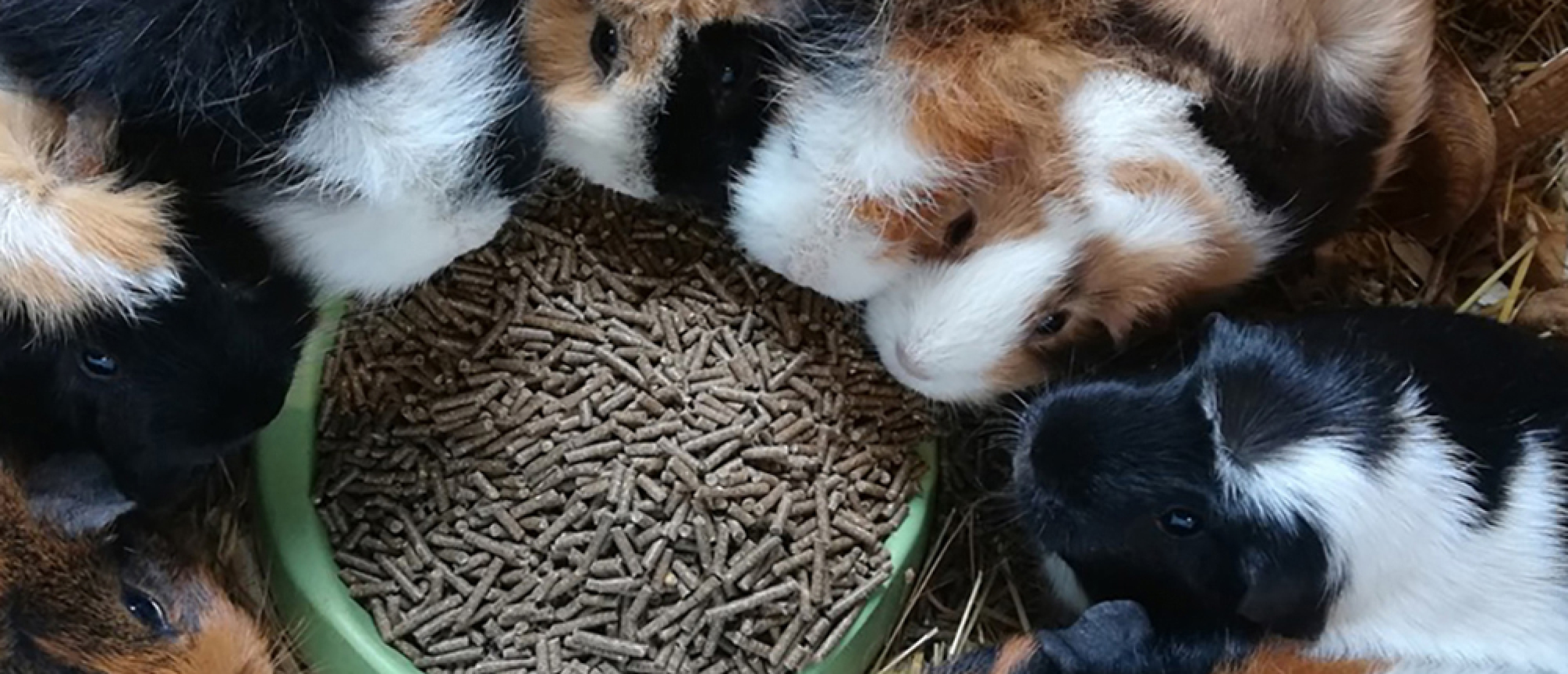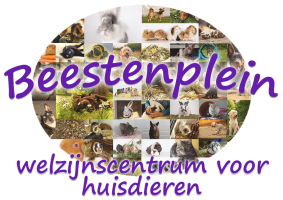
Dry food
Most guinea pigs eat pellets every day. But why do we feed this and how much do they actually need? Which sorts of pellets are available?
Are pellets main food?
No! the main food for guinea pigs is hay. They need unlimited access to this, because their gastrointestinal tract is build for plenty of food with a low amount of energy in it. Their teeth are also made to grind food, which keeps them short and healthy. We can simulate this by providing hay. Pellets on the other hand are quite soft and don’t need much chewing work. They also contain quite some energy, which makes animals fat when they eat too much of it.
Why do you give dry food?
Pellets provide a basis of nutrients to guinea pigs. A good kibble is rich in vitamins, minerals and amino acids (building blocks of proteins). Guinea pigs cannot make vitamin C (like humans can’t too) and this is also supplemented in a good pellet. When the vitamin C is protected, 1000mg vitamin C per kilogram food is sufficient. More is even better, an overload is secreted via the urine without any health risks. Our own enJOYed by Pippa&Koda Guinea pig pellet with herbs even contains 3000mg vitamin C.
What does a good guinea pig pellet contain?
- Protein content of about 15%: this is not too high or too low and a good basis.
- Fat content of about 4%: this is enough and not too fat for the gastrointestinal tract.
- Fibre content of 13-20%: because pellets are only a small part of the guinea pig diet, there is some variation in it. Pellets with a very high fibre content are fine, but always check the fibre source in the ingredient list. Not all sources that are used are good quality.
- Calcium content not higher than 1%/10 grams per kilogram: this is important to keep the risk on urinary tract problems low.
- Artificial colourants, flavourings etc. are not preferred.
- Vitamin C content of 1000mg per kilogram or higher.
Which sorts of food are available?
There are two sorts of dry food: pressed and crispy.
- Pressed food is produced is the most simple production process. Ingredients are chopped and mixed with water. Then, they are pressed through a hole by a temperature of about 70 degrees and cut.
- Crispy food goes through an extruder after the ingredients are chopped and mixed. This is a very expensive machine that presses the mix through a tiny figure under high pressure. When it comes out, the pressure falls of and the pellet expands to a crispy pellet. This process occurs by a temperature of 130 degrees. More nutrients are lost by this higher temperature. Often, artificial colourants are used to make the pellets more attractive, which has no value for our animals.

Press pellets

Crispy pellets
Many animals prefer crispy pellets over pressed pellets and although they are not bad for them, pressed pellets are often cheaper and better in quality. Also, it can be an advantage that animals don’t like their pellets too much: this reduces the risk of over-eating and they will eat their food in smaller quantities over the day instead of at once.
How much dry food does a guinea pig need?
Adult animals need about 30 grams pellets each day. If they don’t eat the entire amount, that’s ok. Most animals eat what they need and that’s often a small hand full. Pregnant sows can eat more pellets after they gave birth and weak animals are also allowed to eat more food. This way, the ingest more vitamins and minerals. But don’t forget a daily dos of fresh veggies and herbs! Guinea pigs that live outside during colder periods may also eat more pellets for extra energy to keep themselves warm.
Mixed food or pellets only?
It’s best to provide a food that only contains pellets. This prevents selection (pellets will often not be preferred). Besides, most mixed food are filled with lots of grains, which contain lots of energy. When you have more animals (which is very like with this social species), it may occur that one guinea pig eats all the tastiest parts and will be prone to become obese with shortages in vitamins, while the next guinea pig only eats the pellets. Also, our piggies learn very fast when it’s about food: we often give new food before the old food is completely eaten. This way, they will leave a part of their foodbowl filled with leftover every time.
Still, it’s very good to provide something else besides pellets, such as dried herbs, vegetables or a small amount of rolled oats when they are not too fat. But it’s best to give this loose from the pellets to make it possible to manage what they eat.
If you live in Europe, you could check out our webshop!

Mixed food with lots of grains is a snack!
